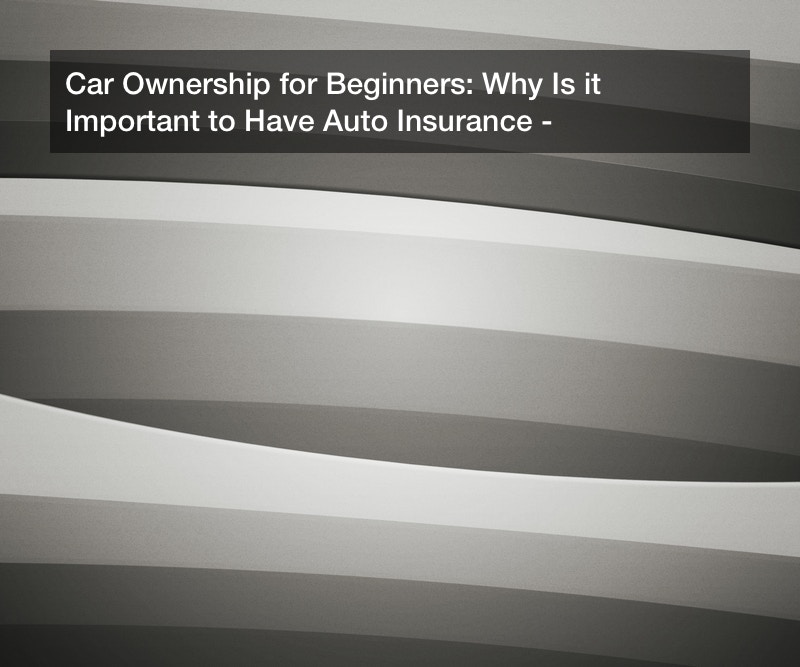
Car maintenance can be a nuisance, but a necessary evil. It can be incredibly time consuming and expensive, but simple and easy investments you make in your car today, like oil changes and tire rotations, will extend the life of your vehicle and save you money later on down the road. Every year in the United States, approximately 6 million cars are sold and many are not properly cared for by their owners. A well maintained car improves safety, enhances reliability and performance, cuts down on expensive repair costs, and increases resale value.
Do not worry. You do not have to be a professional or practiced mechanic to keep your car in the best shape possible. With these rudimentary steps and a little lifestyle advice, anyone can keep their car in tip top shape.
Crucial Car Maintenance at the Gas Pump
When you would be normally standing at the gas pump waiting for your tank to fill up, you could be using this time to perform some important car maintenance and cleaning with these three simple tasks:
1. Clean Your Windshield
A dirty windshield can be a more serious safety hazard than you think. To avoid this risk, clean it regularly with the sponge portion of the squeegee provided by the gas station. Start by applying the cleaning fluid to the entire front windshield. Next, tightly pull the squeegee from the middle to the sides of the windshield. Finish by pulling the squeegee from top to bottom to eliminate any remaining streaks.
If your vehicle is equipped with adjustable tint windows, you may need to follow specific cleaning instructions, since certain tools and cleaning products may end up tearing or scratching the adjustable tint film. The procedure for cleaning adjustable tint generally involves spraying a gentle cleaning solution, like diluted white vinegar, onto the windshield and wiping it off with a soft cloth or rag.
Be sure to clean your windshield after driving on the highway and your windshield is splattered with bugs. In this case, using your vehicle’s wipers and washing fluid will only render your windshield a huge smeared mess, which will only obscure your vision even more. You can use the squeegee for your vehicle’s headlights if they are dirty as well.
2. Check Your Proper Tire Pressure
Checking your tire pressure regularly will ensure your tires are safe. Tire pressure constantly fluctuates with the weather and wear and tear, so it requires frequent checking. Tires that are inflated to the correct pressure see a longer lifespan and even save you money by increasing your fuel efficiency. Tires that are inflated improperly do not stop or handle as well as properly inflated tires, and are more susceptible to a blowout, which is a rapid, explosive loss of air pressure. Improperly inflated tires can include tires that are over inflated or under inflated.
Checking tire pressure can take under two minutes. First, start by:
- Ensuring your tires are cold for the most accurate reading. This means before you have driven around on them for miles. Only one or two miles should still yield an accurate tire pressure reading, but if you have just driven around for miles, wait at least four hours before checking your tire pressure.
- Find your car’s recommended tire pressure. You can often find this number on a sticker located inside the driver’s side door, generally in line with the storage compartment, or you can just check your owner’s manual. This is the number you should undoubtedly abide by.
- Fill the tires to their recommended level, not to the max pound force per square inch (PSI), which is the maximum pressure the tire requires for heavy loads, not the ideal PSI for your tire.
- With the pressure gauge, check your tire pressure and fill with air whenever necessary.
3. Checking Your Oil Level
The most important function of motor oil is lubricating all your engine’s moving parts, which is crucial to your vehicle’s well being and performance. Without motor oil, an engine’s moving parts will quickly deteriorate due to tearing and grinding. Your engine’s oil also transfers the heat from the combustion cycle away and filters all the waste products of combustion through an oil filter. If your engine is not sufficiently oiled, your whole vehicle could be at risk.
Just like your vehicle’s tire pressure, your engine’s oil level requires frequent checking. Luckily for you, checking your vehicle’s oil level is just as easy as checking your tire pressure, as it will require the same amount of time. For this task, all you will need is good lighting and a paper towel. Similar to checking tire pressure, wait about five minutes after driving your vehicle and turning your engine off. This will ensure the oil has drained back into the pan. Also for the most accurate reading, ensure your vehicle is parked on level ground.
- Find the engine’s dipstick, usually indicated by the word “oil” or a picture of an oil can.
- Pull out the dipstick, wipe it off with your paper towel, and return it to its original position.
- Pull out the dipstick again without turning it upside down. This will cause the oil to run the wrong way and produce a false reading.
- At the bottom of the dipstick, there will be two indicators, either two dots or lines. To find your oil level, find where the dry part begins and oily part ends. If the oil line is between the two indicators, your oil level is fine.
- If oil line is below the bottom indicator, the engine needs more oil, usually just a quart. Never add more without driving your vehicle first and checking the new oil level. An excess of oil will have detrimental effects on the engine as well.
It is completely normal for your vehicle to consume oil between changes. Most cars are manufactured with a consumption rate of one quart for every 1,000 miles. If your vehicle’s consumption rate is higher, this could indicate a larger issue with your engine. In this case, the engine could be leaking oil or burning oil along with gas. If your engine requires a quart of oil for about every 500 miles, your vehicle needs to be inspected for internal and external leaks, and possibly an oil analysis may be required. In this case, do not wait for your yearly inspection required by law.
Other Parts To Check
Other than these three simple car maintenance tasks listed above, there are a few other parts of the car that need to be regularly checked, such as the windshield wipers and the battery. If your wiper blades make a screeching noise or streak the windows, replace your blades immediately. For your battery, make sure the terminals are not corroding. A simple mixture of baking soda and water can be used to clean corrosion from the battery cables and terminals.
Following the Manufacturer’s Recommended Maintenance Schedule
Your car requires other, less frequent maintenance that is just as important for your vehicle’s overall well being and lifespan. This includes replacing the transmission fluid, AC repair, and rotating tires. Although, these car maintenance jobs often require a properly trained mechanic with the necessary shop and tools.
However, it is important to disregard any mechanic’s or dealer’s schedule for recommended maintenance, who will suggest more frequent maintenance than you actually need, and instead follow the manufacturer’s recommended maintenance schedule located in the owner’s manual. For example, many mechanics recommend having engine coolant replaced every 30,000 miles, but a lot of cars can run for quadruple that distance before needing its coolant changed. After the 120,000 mile mark, manufacturers recommend having engine coolant replaced every 60,000 miles.
As another example, most car maintenance shops recommend an oil change every 3,000 miles while the majority of modern engines are able to run for 5,000 miles before needing their oil changed. Case in point, instead of relying on a mechanic or car maintenance shop for a service schedule, check your owner’s manual. There should be a section dedicated to the manufacturer’s schedule for recommended maintenance. Rely on this for information on how often you should be replacing parts and fluid, rotating your tires, and having your oil changed.
If you do not have or are unable to locate a physical owner’s manual, one should be available online. From Toyota to Mercedes Benz original parts, you can save a lot of money by following your manufacturer’s recommended maintenance schedule and preventing unnecessary and expensive replacements and repairs.
Keeping Your Car Clean
Other than regular car maintenance, keeping your vehicle clean is another crucial step in proper upkeep. This begins with regularly washing your car. Unless it is kept indoors and never taken out, a vehicle is exposed to harmful elements every day, such as rain, snow, salt, sun, grease, smog, bugs, and bird excrement. These substances can eat away at the paint and eventually the metal underneath. While it will be difficult to spot any immediate damage, these harmful elements will corrode your car’s finish over time and decrease its potential resale value.
There are a few factors that determine how often you should be washing your vehicle, such as climate and location. If you live in a location with high pollen, pollution, or salt levels in the air, you may need to wash your car a few times a month. If you live closer inland where there are lower levels of pollution and salt in the air, no more than once a month will be adequate.
However, during the winter months, more frequent washing may be necessary due to the snow, ice, mud, and salt that collects on the roads, and thus, your car. To go that extra mile, detail your vehicle after washing it and opt for a professional cleaning service if necessary or desired.
Car Maintenance You Can Do Yourself
As newer cars are becoming more and more complex due to onboard CPUs and other technology, including coffee accessories like heated cup holders and in-car espresso makers, a lot of vehicle maintenance requires a trained mechanic. However, a few tasks remain that any man or woman can complete. Some approachable car maintenance tasks are:
Changing your oil every 5,000 miles – There are many in-depth guides, instructional videos, and tutorials that exist to assist you with changing your vehicle’s motor oil yourself. For those living in an apartment or dorm room and do not have access to a driveway or non-busy street, changing your oil yourself may not be plausible. No matter whether you do it yourself or opt for a mechanic, changing your oil every 5,000 miles is one of the most crucial car maintenance tasks that will ensure your vehicle runs smoothly.
Changing your air filter every 12,000 miles – This is a car maintenance task so easy anyone can do it. Regularly changing your vehicle’s air filter prolongs the life of your engine, reduces carbon emissions, and increases fuel efficiency. Changing your own oil comes with many inconveniences, such as properly disposing of your used oil, while changing an air filter comes with no such hassles. Completing this task yourself is an easy way to save half the cost than if you were to go to a car maintenance shop.
Rotating your tires every 5,000 to 10,000 miles – While this car maintenance task may be on the less approachable side of the spectrum, it is still completely doable. The reason tires require rotating is because the rear and front tires wear at different rates, so rotating them regularly will even out their natural wear pattern. This will produce a safe and smooth ride while also extending the life expectancy of your tires, saving you money on expensive replacement costs.
While vehicle maintenance is generally considered to be a nuisance, hopefully this guide has illuminated the fact that taking care of your car is relatively easy. Now that you know the basics when it comes to car maintenance, you can ensure that your vehicle remains in tip top shape.







